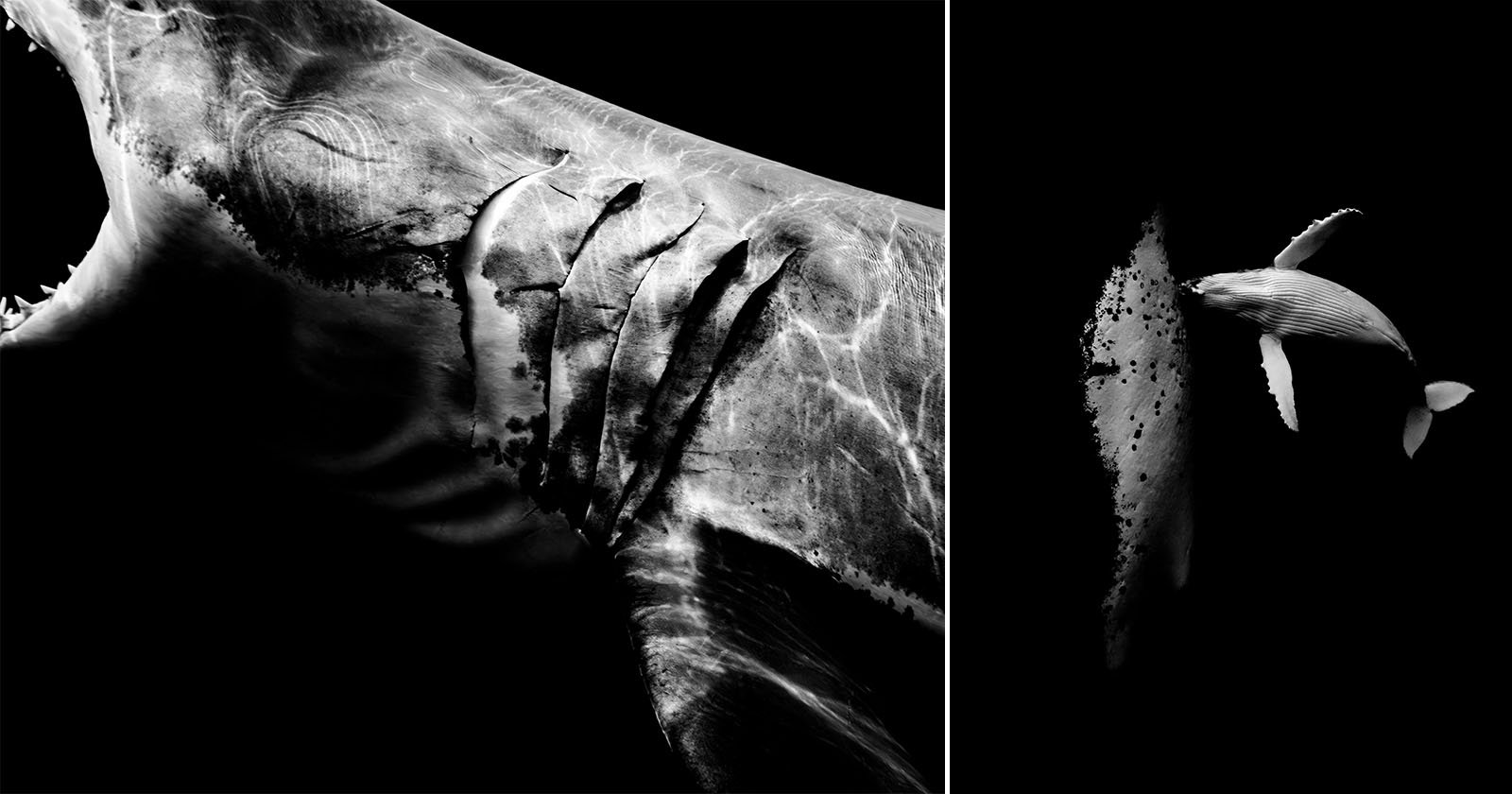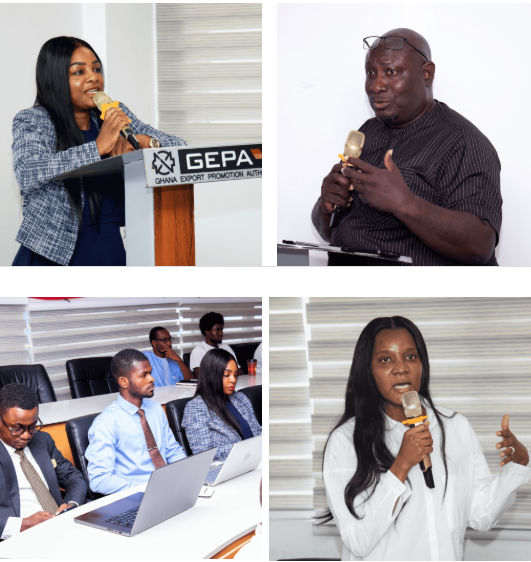Copyright PetaPixel

Acclaimed photographer and industrial designer Matt Draper’s latest solo exhibition, Within One Breath, opens today at the Leica Gallery New York. The photos featured in the show were all captured on a single breath while freediving with Leica rangefinders and using only natural light, ensuring that the beautiful underwater environment was disturbed as little as possible. Draper spoke with PetaPixel about his stunning monochromatic underwater photography, his unique approach to shooting, his industrial design projects with Sub13, and even the fact that one of his photos went to the Moon on the UNESCO Memory Disc. Draper’s Work Speaks to Something That Feels Ancient The photographer’s black-and-white work has a magnetic appeal for many viewers, something Draper thinks is different and personal for each viewer. However, he recalls that a friend once told him the animals Draper photographs “sing to something ancient within us,” a remark that has stuck with Draper over the years. “I feel that same pull, not so much when I see the finished works, but when I’m there in person, sharing space with something truly wild,” he says. Draper’s subjects include sharks, seals, whales, and more, and the exhibit comprises photos from free dives in the South Pacific, Australasia, the Indian Ocean, Hawaii, and more. Draper says his encounters “strip everything away” and remind him “what it feels like to be part of the natural world, rather than a visitor to it.” The artist thinks that this is perhaps what people sense when they view his work. Draper, who is colorblind, admits that he was “almost forced” into the monochromatic photographic style that has become his trademark. “Black and white has always felt natural to me. It draws attention to shape, form, and emotion without distraction,” Draper says. “Someone at my last show mentioned that the difference between a photographer and an artist is that one talks about cameras and the other talks about light. I liked that. I don’t see myself as overly technical, but I do see light and shadow in a way that feels instinctive.” Achieving the Perfect Black in a Photo and a Print Is ‘Almost Impossible’ Draper’s work relies heavily on extremely rich, deep blacks, which he says he is “constantly chasing” in the field. “Getting those blacks right is almost impossible, but when it works, it’s magic,” Draper says. He adds that seeing his photos in person, as prints, is when the medium truly shines. However, getting the print right can sometimes be nearly as challenging as getting the shot. “I think my printmaking team has probably hated me for our entire relationship, and I am lucky they still take my calls,” Draper explains. “My work is almost impossible to print.” Sometimes it takes multiple attempts to get a print right, and even the tiniest error means that the print must be redone. “Tim and Vanessa from Thirds Fine Art Printing in Australia handle all of it, and I am nothing without them,” Draper says. “We go to extreme lengths to get the profiles right, and the blacks they achieve are unlike anything I have ever seen.” “I can honestly say I look at my own prints and think they are some of the best I have ever seen, not from ego, but because I know the time, effort, and cost that go into each one. Art is subjective, but I truly believe that effort and discipline always outshine raw talent,” he continues. Draper wants to keep the precise paper he uses close to the vest, as it took years and significant cost to find the perfect one for his work, but he adds that printmaking is “one of the most beautiful forms of art.” The artist recalls one time when he had an important piece shipped from Australia to a framer and longtime collaborator in Los Angeles. The framer was so stressed while working that a bead of sweat rolled down his forehead and landed on the print, immediately ruining it. ‘Art is subjective, but I truly believe that effort and discipline always outshine raw talent.’ From Working In Construction and Mining to Having a Photograph Sent to the Moon Draper is no stranger to hard work and long hours, though. While he tells PetaPixel he has always been creative, he didn’t nurture his artistic side as a child. “I left school and home as a young teenager, ended up working in construction and mining right up until 2014, when I bought a camera, a lens, and an underwater housing,” Draper says. “I was a lifelong surfer who simply wanted to photograph friends in the water.” What started as “an escape” from his job, which Draper says no longer inspired him, ultimately became his life’s work. Draper’s freediving and photographic skills grew in unison, informing the work he does to this day. “In 2017, I met David de Rothschild, who’s now a close friend. He helped me a lot in those early days, almost like a mentor, encouraging me to take the art seriously. Those first trips to Los Angeles were eye-opening. Visiting places like the Getty and seeing other artists who weren’t afraid to take themselves and their work seriously changed how I viewed my own path. I do take it seriously, even though it’s fun. It’s methodical,” Draper says, adding that he also has the animals to thank. “They’ve allowed me to get so close, to share those fleeting moments that feel almost sacred. Everything I’ve built has come from those encounters. I owe it all to them.” Speaking of Draper’s freediving skills, they are integral to his photographic process and his new show, Within One Breath. “There is something powerful about holding your breath,” Draper says of diving unassisted. “Time slows, noise fades, and you feel completely present. It is the purest reminder of what it means to be alive.” From a technical perspective, freediving gives Draper an advantage, he says. It enables him to be quieter, more fluid, and less intrusive underwater. He waits at the surface until the right moment arrives, and if the animal is interested and wants to be close, he will dive. ‘There is something powerful about holding your breath. Time slows, noise fades, and you feel completely present. It is the purest reminder of what it means to be alive.’ “It is a collaboration, in a sense.” The intimate, emotional nature of Draper’s work has earned him significant attention over the years, and culminated in what he considers one of the “coolest” achievements of his career so far. Draper’s image, Bow, which is in the Within One Breath exhibit, was selected to be on the UNESCO Memory Disc, which is a time capsule that has been included in three lunar missions since 2024. The Memory Disc carries humanity’s cultural and artistic heritage into space to preserve it for future generations. “Hard not to sound egotistical with this one, I mean, it is going to the Moon. It really comes back to taking the work seriously, and there is nothing better than when others do the same. When something like this becomes real, it feels like the coolest and most ridiculous flex imaginable,” Draper says of his photograph being on the Memory Disc. “It is hard to describe it without sounding like a peanut, but I would love to be remembered as an artist who kept evolving. I have moved more into industrial design now, but looking back over a ten year body of work that I honestly do not think I could better, having one of those pieces included on the UNESCO Memory Disc alongside the Mona Lisa as the only photograph, it is a real pinch yourself moment. I am proud of that.” Shooting With Leica Rangefinders Underwater Concerning Draper’s industrial design work, he has been featured on PetaPixel numerous times for his work with Sub13, the company he founded that designs bespoke underwater housing for Leica cameras, including its rangefinders, like the ones Draper uses to capture his incredible photos. “So much of my work has been about myself, a lot of I and a lot of me, and even I get tired of that. SUB13 came from the same place as everything else I do, obsession. I was relentless about getting the M fully functional underwater, for all my work, so I kept pushing until it finally worked. What started as a personal experiment turned into close to 10 years of trial and error, and somewhere along the way it created a bit of a buzz,” Draper explains. Once he and his team felt good about what they had built, they shared it with the rest of the world via very limited production runs. Draper says that Sub13 has become one of his favorite projects of all because it enables other artists like him to create and explore their passions and artistic visions. “It was built by an artist, now for artists,” Draper says. He and the rest of the team, which includes three others, decided to make a new underwater housing for each time Draper had a Leica show, as a way to celebrate and give back to Leica for its ongoing support. When Draper’s work was exhibited at the Leica Store in Washington, they built a one-of-one Leica M6 Orca Edition. Now, for Leica Gallery New York, Sub13 built a special M11 version with a custom, laser-engraved, paint-filled design “inspired by the animals that shaped the work itself.” As for why Draper uses a rangefinder for his underwater photography, which is undoubtedly more challenging in some ways than other modern cameras, he says he loves finding ways to overcome seemingly impossible challenges. “As much as the idea of less is more rings true, I seem to choose every path that makes things harder, and that is probably why I never get bored,” Draper says. “The rangefinder is, without question, the hardest and most impractical camera I could have chosen to take underwater,” he says. “You only need to read the comments on Sub13 posts to see people asking why, and that question is exactly what keeps me inspired. I love the process, I love what I use, and I love how it all feels when it finally comes together. That, to me, is what art should be.” Ultimately, the fact that others connect with Draper’s approach is a nice bonus, but he argues that artists should always create first for themselves. “It may not always make sense. It may not always make money. But staying true to yourself always shows in the work,” Draper says, adding that the Leica M remains his “favorite tool.” Leica’s Commitment to Artists Like Draper For its part, Leica is a massive supporter of Matt Draper’s artistic mission. “It is truly special to welcome Matt Draper back,” says Karin Rehn-Kaufmann, Art Director & Chief Representative of Leica Galleries International. “His work embodies patience, respect for nature, and a deep emotional connection to the subjects he photographs. Within One Breath reminds us of the power of stillness and presence — values very close to Leica’s heart. We are honored to share his vision once more.” Rehn-Kaufmann describes Leica Galleries as emblematic of the very heart of Leica’s brand. “They are where photography becomes dialog, where images meet people and create meaning. We support artists like Matt Draper because they bring integrity, curiosity, and humanity to their work. They show what photography can inspire when used with purpose.” Like all of the shows at Leica Galleries worldwide, Draper’s new one has been curated specifically for him and his extraordinary work. Rehn-Kaufmann and her team work closely with photographers like Draper to design the perfect layout. “For Within One Breath, the layout is spacious, calm, and immersive, mirroring the quiet intensity of Matt’s underwater world. The work is installed chronologically to share the development of Matt’s vision over time,” Rehn-Kaufmann says. This is a special year for Leica, as it is celebrating the 100th anniversary of the Leica I, the world’s first 35mm camera. Within One Breath, alongside Leica’s other exhibits this year, celebrates “a century of seeing the world through the eyes of extraordinary photographers.” “This anniversary is not only about history; it is about continuing to support artists who redefine how we see, feel, and understand the world,” Rehn-Kaufmann concludes. ‘Within One Breath’ Opens Today Matt Draper’s Within One Breath opens today at the Leica Gallery New York and runs until January 11, 2026. There is a special opening celebration tonight, November 6, at 6 PM, which, like the regular show, is free to attend.



